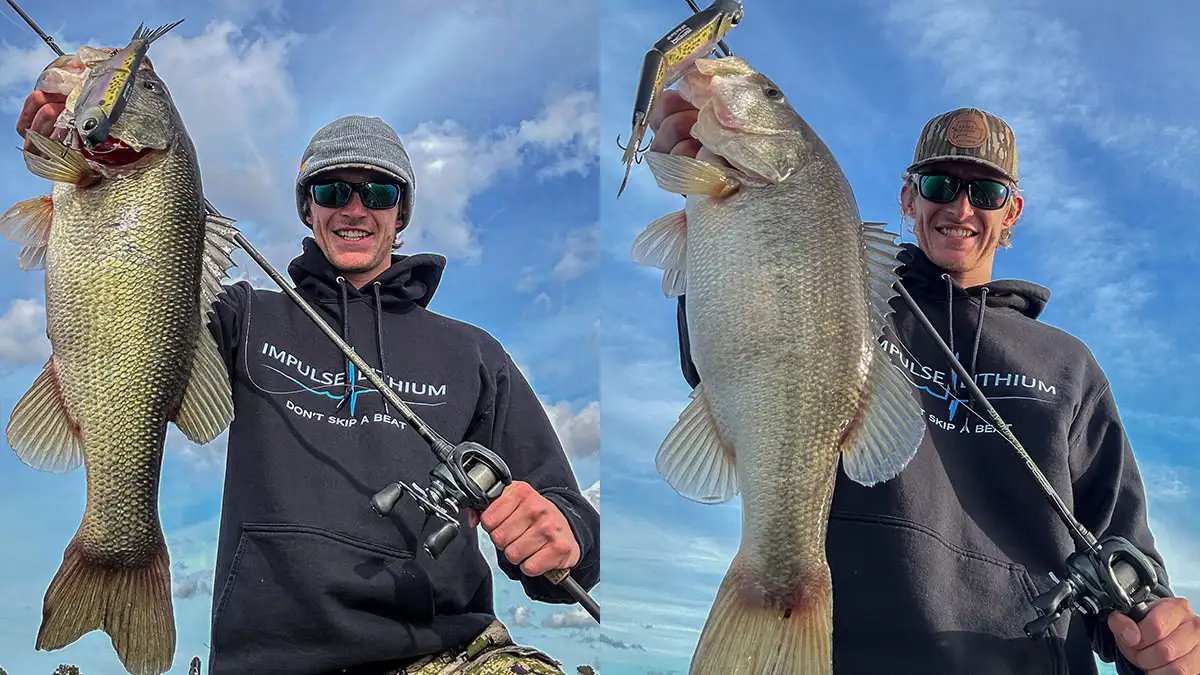I’ve been a devoted bass angler for as long as I can remember. Rarely targeting other species, I’ve made it a point to learn as much about bass as physically possible. While I’m far from an expert, I have learned a lot about how bass position, act and feed over the last several years. One of my favorite ways to learn about these creatures is by testing out a variety of different baits. Including throwing a glide bait.
Recently I’ve devoted a lot of time to throwing a glide bait using forward facing sonar. I’ve been a glide bait fisherman for years, however, I hadn’t used this bait in conjunction with forward facing sonar until fairly recently. Over the last several months, I’ve learned a ton about bass behavior and how they react to these giant baits. Forward facing sonar has allowed me to study how fish react to various presentations and lure sizes, and I wanted to share my findings with you all.
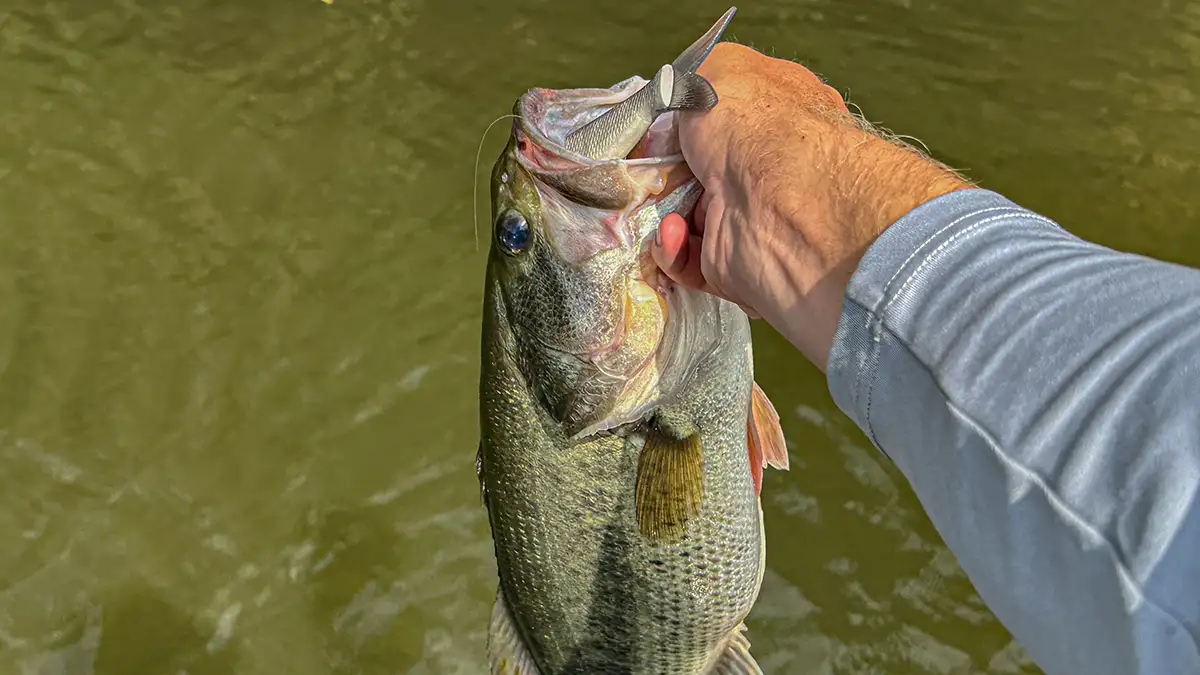
DRAWING POWER
One of the first things I noticed throwing a glide bait using forward facing sonar was its drawing power. Drawing power refers to how far a fish is willing to swim to check out your bait. This is typically dependent on the size of the bait and clarity of the water. The larger the bait, the more drawing power you will likely have. This is also true when fishing clear water. Clear water means increased visibility, often causing fish to swim a greater distance to check out your bait.
I have been throwing a glide bait up shallow for the last several years. Casting this lure at shallow cover is a super fun way to fish this bait, and its still something I do fairly often. Using forward facing sonar in conjunction with this lure however, gives you a much better understanding of how fish are reacting to your bait. One of the biggest surprises I’ve experienced since throwing a glide bait on forward facing sonar is how far these fish will travel to eat this bait. Ive seen fish swim upward of 20 feet to chase down a glide, which is exceptionally further than any other bait I’ve tested. One of the biggest reasons bass are so fascinated with this lure is its overall size and profile.
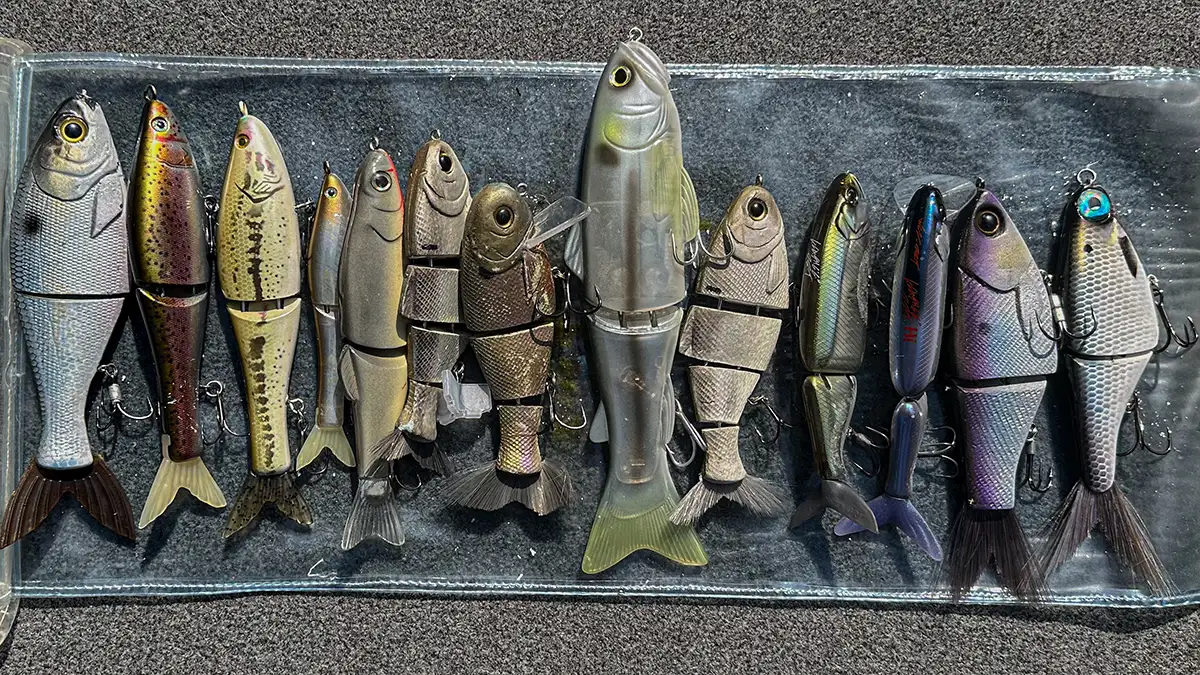
SIZE MATTERS
The size and profile of your glide bait is directly related to how fish react. While there’s no magic size, you can adjust your presentation based off their reaction to your bait. Another factor I take into consideration is the caliber of fish in your fishery. If your fishing somewhere like Texas or Florida, an 8-inch glide bait is perfectly acceptable. However if I’m fishing in areas with a lesser population of giant bass, I typically opt for something in the 6 to 7-inch range.
I’ve noticed that fish react differently based on the length and width of your glide. Typically a thinner 6 to 7-inch glide generates a lot of 2 to 3-pound bites. However, it can be more difficult to trick a trophy sized bass into biting. Anything in the 8-inch or greater range almost strictly caters to big bass. Ive thrown this caliber glide on several occasions, on numerous different fisheries. The smallest fish I’ve gotten to commit to this size bait is a 4-pound caliber bass. I typically stick with a smaller glide when fishing tournaments, and I’ll opt for a larger size when trophy fishing or looking for a solid kicker.
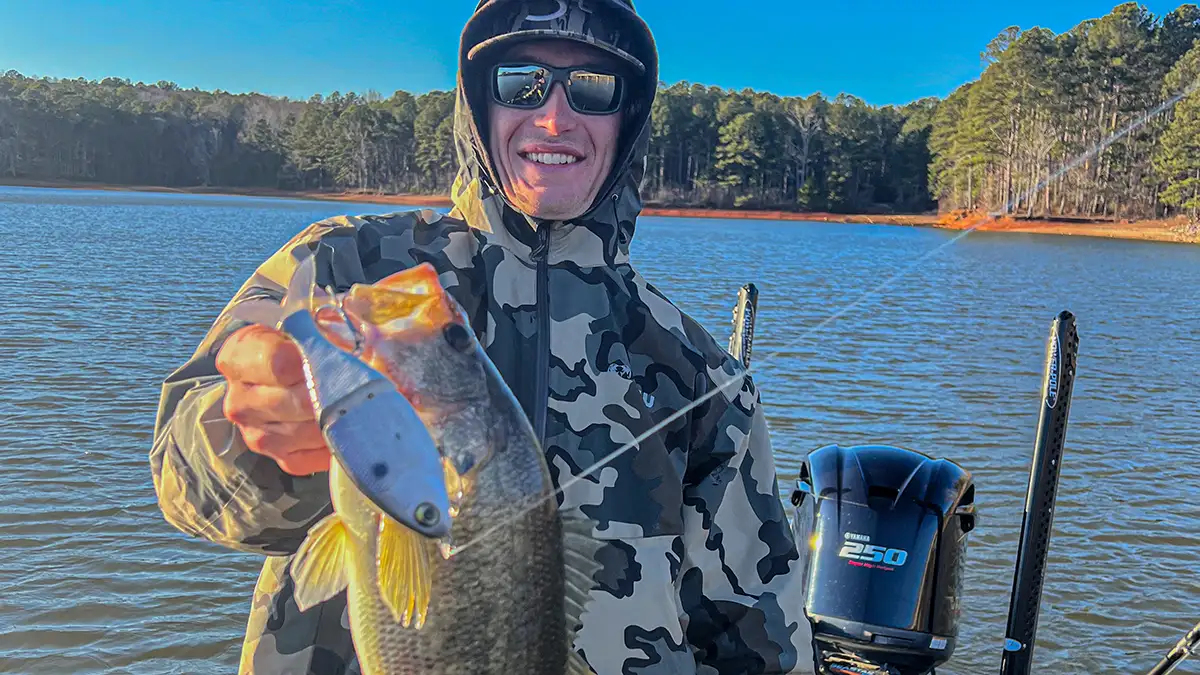
SINK RATE
Sink rate is another important factor when choosing a glide bait. This is a crucial component for throwing a glide bait offshore, and it can often be the difference maker in having a successful day on the water. Before forward facing sonar this was never something I really paid attention too. However, I quickly learned this is a real difference maker when targeting deep offshore bass.
When fishing shallow, I prefer a glide that suspends right beneath the surface. This allows your bait to come through cover without snagging on debris. This is also great for fishing around submerged vegetation. A fast sink glide will often bog down in grass hindering the baits action, therefor a suspending glide bait is preferred in this scenario. One of my go-to shallow glide baits is the MM26 Herring Glide. This bait has a slow sink and thin profile, perfect for making accurate casts around shallow cover.
When fishing locations such as offshore brush however, I will opt for a faster sink rate. This allows your bait to reach fish at a faster speed, making you a more efficient angler. The down side to this faster sinking rate is it forces you to work your bait much faster. This is great for aggressive fish, however it is less ideal when trying to coax pressured bass into biting. The slow suspending action is much more realistic, while the fast sink is much more efficient, so its a real trade off. One of my favorite glide baits for fishing in the 8 to 15-foot range is the Spro KGB Chad Shad. This bait has a quick fall rate and an aggressive action, perfect for targeting offshore brush and other types of deep cover.
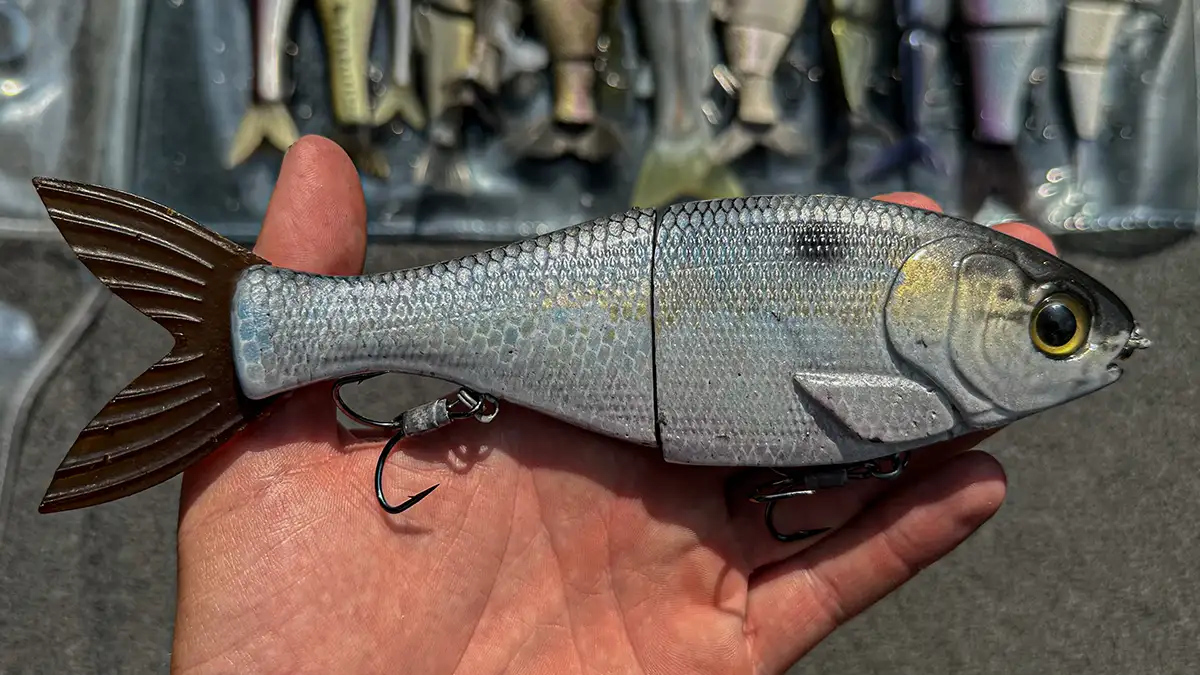
ITS A GREAT SEARCH BAIT
Not only do glide baits catch giant bass, but they make for a great search bait. This can be a super useful tool when practicing for a tournament or simply looking for a large congregation of bass. Fish aren’t always willing to commit to this lure, however they will almost always show some interest. Casting a glide bait around cover is a great way to pull fish out of their hiding spots and get a good look at how many fish are in an area.
This can be especially helpful when brush pile fishing. Oftentimes, bass will hold super tight to brush making them difficult to see on live sonar. Throwing a glide bait over this cover is a great way to quickly see how many fish reside in that specific pile. This technique is effective in shallow water as well. Throwing a glide bait around the edges of docks and other shallow cover is a great way to get a look and what lives in that area. This technique has helped me locate fish in numerous tournaments, and is a great pre-fishing strategy.
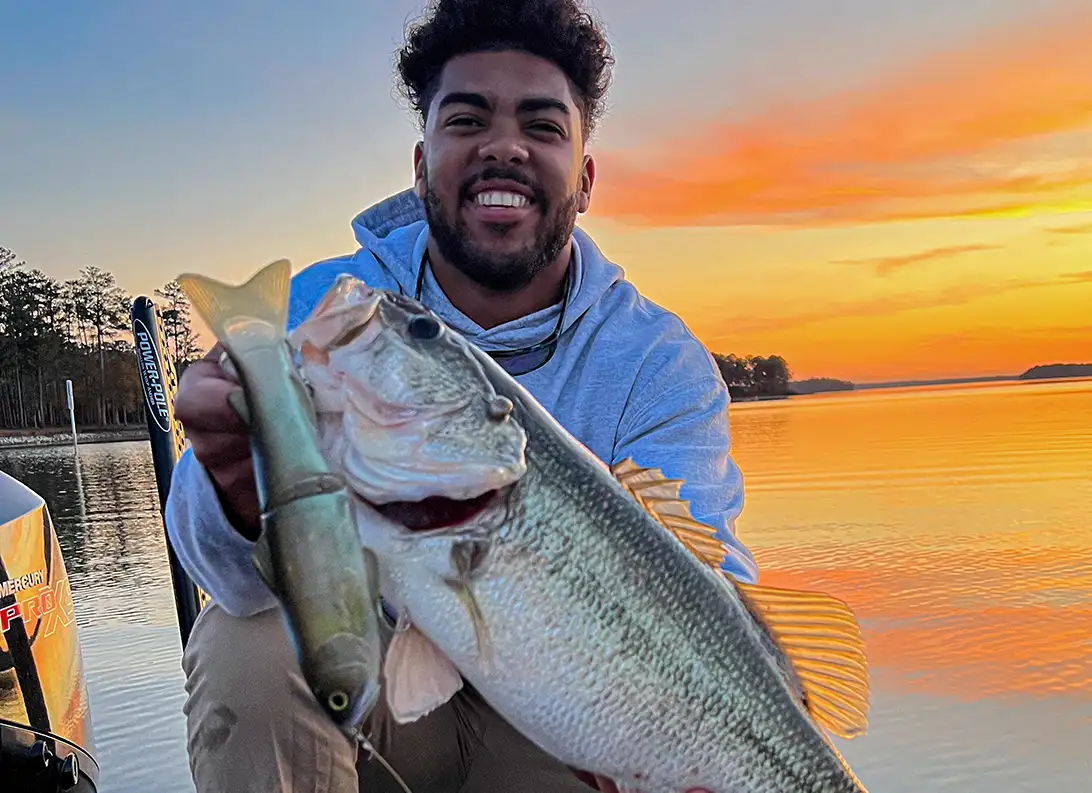
PERSONAL EXPERIENCE THROWING A GLIDE BAIT
One of my most notable days throwing a glide bait occurred on one of my local lakes here in Auburn, Alabama. This was mid February of last year and fish were begging to enter into their pre-spawn tendencies. I was fishing with my good friend Carty Shoen, who is an Arizona native and glide bait fanatic. I was much more skeptical of these baits at the time, and it was his mission to show me otherwise. We targeted a variety of pre-spawn location with both a jerkbait and a glide bait. I had caught a substantial amount of fish that day, however the larger caliber fish were evading me.
There was one specific shoal where I had caught upwards of 20 fish that day, however they were all in the 2-pound range. We later returned to this spot, and Carty lobbed a Deps Slide Swimmer 250 glide bait onto the shoal. Without hesitation I watched a 6-pound bass rocket off the bottom and destroy his glide. This fish catch taught me a valuable lesson about lure presentation. I had been targeting that same school of fish all day, however I never tricked a big one into biting. This showed me that a giant bait was the only thing that could get that fish to react. Since then I’ve implemented glide baits into my arsenal and I know without a doubt I’ve caught more big bass because of it.
Throwing a glide bait is a super fun way to catch giant bass all over the country. Not only does it catch big bass but it teaches you a lot about fish behavior, especially when used with forward facing sonar. While you may not get many bites, this style of fishing is still action packed. If you’re looking for a fun new way to catch giant bass, throwing a glide bait is the perfect way to do so.


